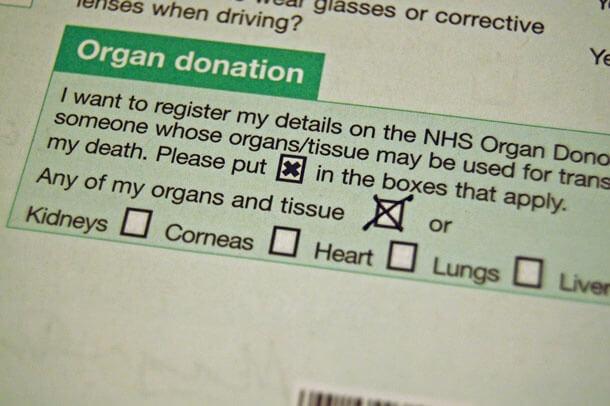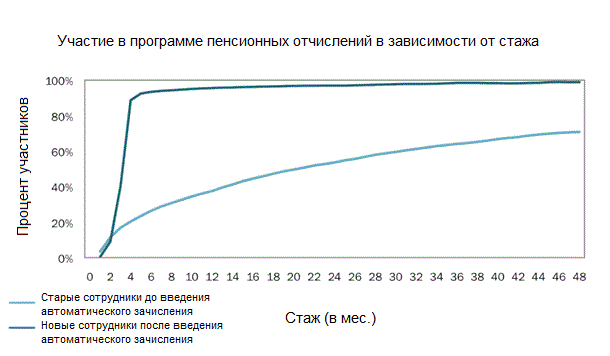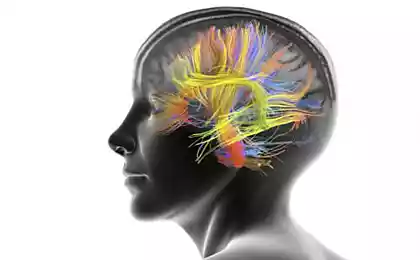633
Set and forget: as the default settings rule the world
In many cases we make decisions "by default" (and even may not notice). American journalist Lena Groger talks about exactly how certain someone settings affect a variety of areas of our lives.
Design can protect us from harm and to save lives. But there is another, not so obvious way of its influence on our daily decisions and behavior. I'm talking about the default settings.
The default settings are those that go out of the box; to activate them, you just need to press Enter; these are the settings that people change only if they don't like something.

Perhaps this question does not seem so serious, but the standard settings (and their developers) have enormous power – they take those decisions, which we do not even think. Agree, most people never changed the default settings of the computer, the standard ringtone on your phone and standard temperature in the refrigerator. Someone somewhere decided what should be these settings – and, most likely, it was not you.
Another example: in the US, when you apply for a driver's license, you must answer the question, will you agree to become an organ donor. In America, all arranged on the principle of optional consent – that is, by default, you waive that in the event of your death, your organs will be transplanted to the needy person. If you want to donate your organs, then you need to be active and to select the appropriate item in the questionnaire. Only about 40% of the citizens agree to be an organ donor.
In other countries such as Spain, Portugal and Austria – in the matter of donation the default is a positive response, but if you want you can refuse. In most of these countries are potential donors is 99% of the population. In a recent study it has been proven that in countries with a policy of so-called "presumed consent", i.e. with the possibility of refusal from participation in the program is not only increasing the number of donors but also a consistently higher number of transplants.

Of course, the success of the system of organ donation is influenced by other factors, but it seems that the difference in the choice between optional and optional consent refusal does influence our collective behavior. This difference, ultimately, may affect, get someone's vital organ for transplantation or not.
A specialist in behavioral Economics Richard Thaler and legal scholar Cass, Sunstein in his book wrote in some detail about the impact of default settings on human behavior. In the book "Hints: how to influence decisions about health, wealth, and happiness" outlines ways in which the setting "default" to affect our daily decisions, even though we might never notice.
In addition to organ donation, the list of potential "hints" are the most different spheres: from the reshuffling of dishes on the menu sometimes, to increase sales of certain items, to change the default temperature of office air-conditioning to save electricity.
But my favorite example was the way to get kids to eat more vegetables.
What if I told you that you only require one minor change to make children eat more vegetables in the school cafeteria? It doesn't cost anything, you don't have to force people to eat something by force, and it takes only a few minutes. And it happened in real life: in the dining room of a new York high school the salad bar was moved from the old place by the wall and put it right in the middle of the hall (and in front of the offices, as shown in the image below). Sale of vegetable salads has increased more than threefold.

Moving the salad bar in place, by which it is difficult to pass, allowed to increase the sales of salads by 200-300 percent.
The same effect can be obtained by moving in the dining room, fruits or healthy snacks at the checkout.
Another example comes from the field of personal Finance. In many American companies with a pension plan don't work by default: you need to contact the human resources Department on this issue, and in some cases it is necessary to understand something of the investment.
Much more useful benefits of the alternative strategy: automatic participation in the program. This means that by default, all employees participate in the program, but if desired this could be refused. Studies show that in such conditions the number of participants in the program pension contributions increases dramatically, and savings for retirement do not have a significant effect on other types of savings.

Auto-enrolment retirement savings dramatically increase the percentage of participants. The graph shows the example of one company thus managed to increase the number of participants among new employees with less than 20% to 90%.
In addition, programs with automatic enrollment cost nothing to the government unlike the tax subsidies to citizens, revenue-generating money into the pension Fund.
However, using this facility to help easy to increase the number of program participants, most of them leave the contribution rate at a low standard level (often 3%). A very low score in the long run.
To solve this problem, many American employers have introduced the system of automatic increase of interest, that is, the employee must consent to the increase of the amount of payments to one or two percent a year.
In one such system called Save More Tomorrow, the increase in the percentage is due to increase your salary to increase fees for you wasn't so noticeable. In an article published in the journal Science in 2013, the economist Thaler calculated that the program of automatic increase in interest has allowed to increase annual contributions by $7.4 billion Minor standard tuning can bring very significant money.
The default settings can benefit and electoral system. US citizens, eligible voters are automatically registered to vote when they turn to state institutions (for example, to obtain a driver's license). Automatic voter registration work in five States, and 24 state considering the introduction of such a law. Such reform would give the right to vote to anyone who refuses to do this consciously.
While some of these default settings are in force only once a year, or on election day, others directly affect our daily lives. Take, for example, a standard font in a text editor. Most people is Times New Roman.
It is not only for many years the default font in Microsoft Word, but also since its inception as a newspaper printing font I could get into the books, magazines, legal documents, school essays and almost every personal computer on the planet.
Times New Roman has penetrated every region of the text society – so much so that Matthew Butterick, author of the book "typography for lawyers", called it "a standard font for everything". Battery also writes:
When Times New Roman appears in a book, document or advertisement, it implies indifference. He says: "In choosing the font I went for the path of least resistance." Times New Roman is not so much the choice of font, as the lack of that choice, just as the darkness of deep space is not a color... If you consciously choose Times New Roman, stop.
Of course, in the very first web browsers, the text is also displayed as Times New Roman. As a result, in our memory still remained painfully familiar, canonical view "of the early Internet of the 90s".

We've all been there. In the early ' 90s the Times New Roman font was the king of the Internet.
Default settings may reflect views that we are not proud of. The standard color for things like patches or cosmetic pencil "Nude" for a long time had a slight tan or peach shade, and it does not reflect the variety of skin tones.
Before all the Emoji with the pictures of people have a light skin tone, and only recently was introduced other options. Standard still is a cartoon-like yellow (which is a controversial decision), but users of some smartphones now at least can you choose your standard color from a more diverse set.

Often the situation with the default settings determined by external conditions (the company where you work; the country in which you live). But not always.
In many cases you can change the default settings. For example, the designer David Kadavu recommends strategically to change the arrangement of icons on the home screen of your smartphone. The point is that you need to put in the most prominent place the apps that you want to use as often as possible, and not the ones that you Geispolsheim. He Kadavu says:
"If you change your environment so that it would be difficult to do undesirable things for you and easy to do useful, your behavior will change accordingly."
You can easily figure out how to change the defaults in your life and to change their lifestyle. Make a permutation in the cupboard with food to junk food was harder to find. Put your running shoes beside the bed to first thing in the morning they caught your eye.
20 shocking facts about fast food that will forever change your attitude towards them
10 films, imbued with the psychology of Carl Jung
Take away the icon of the Facebook application on your smartphone. Set up automatic deduction of money from your account into the savings so you don't have to translate them every month manually. Change the default font from Times New Roman to any other.
So what are you waiting for? Go ahead and change the default settings. published
Author: Alexey Zenkov
P. S. And remember, just changing your mind — together we change the world! ©
Source: rusbase.com/story/by-default/
Design can protect us from harm and to save lives. But there is another, not so obvious way of its influence on our daily decisions and behavior. I'm talking about the default settings.
The default settings are those that go out of the box; to activate them, you just need to press Enter; these are the settings that people change only if they don't like something.

Perhaps this question does not seem so serious, but the standard settings (and their developers) have enormous power – they take those decisions, which we do not even think. Agree, most people never changed the default settings of the computer, the standard ringtone on your phone and standard temperature in the refrigerator. Someone somewhere decided what should be these settings – and, most likely, it was not you.
Another example: in the US, when you apply for a driver's license, you must answer the question, will you agree to become an organ donor. In America, all arranged on the principle of optional consent – that is, by default, you waive that in the event of your death, your organs will be transplanted to the needy person. If you want to donate your organs, then you need to be active and to select the appropriate item in the questionnaire. Only about 40% of the citizens agree to be an organ donor.
In other countries such as Spain, Portugal and Austria – in the matter of donation the default is a positive response, but if you want you can refuse. In most of these countries are potential donors is 99% of the population. In a recent study it has been proven that in countries with a policy of so-called "presumed consent", i.e. with the possibility of refusal from participation in the program is not only increasing the number of donors but also a consistently higher number of transplants.

Of course, the success of the system of organ donation is influenced by other factors, but it seems that the difference in the choice between optional and optional consent refusal does influence our collective behavior. This difference, ultimately, may affect, get someone's vital organ for transplantation or not.
A specialist in behavioral Economics Richard Thaler and legal scholar Cass, Sunstein in his book wrote in some detail about the impact of default settings on human behavior. In the book "Hints: how to influence decisions about health, wealth, and happiness" outlines ways in which the setting "default" to affect our daily decisions, even though we might never notice.
In addition to organ donation, the list of potential "hints" are the most different spheres: from the reshuffling of dishes on the menu sometimes, to increase sales of certain items, to change the default temperature of office air-conditioning to save electricity.
But my favorite example was the way to get kids to eat more vegetables.
What if I told you that you only require one minor change to make children eat more vegetables in the school cafeteria? It doesn't cost anything, you don't have to force people to eat something by force, and it takes only a few minutes. And it happened in real life: in the dining room of a new York high school the salad bar was moved from the old place by the wall and put it right in the middle of the hall (and in front of the offices, as shown in the image below). Sale of vegetable salads has increased more than threefold.

Moving the salad bar in place, by which it is difficult to pass, allowed to increase the sales of salads by 200-300 percent.
The same effect can be obtained by moving in the dining room, fruits or healthy snacks at the checkout.
Another example comes from the field of personal Finance. In many American companies with a pension plan don't work by default: you need to contact the human resources Department on this issue, and in some cases it is necessary to understand something of the investment.
Much more useful benefits of the alternative strategy: automatic participation in the program. This means that by default, all employees participate in the program, but if desired this could be refused. Studies show that in such conditions the number of participants in the program pension contributions increases dramatically, and savings for retirement do not have a significant effect on other types of savings.

Auto-enrolment retirement savings dramatically increase the percentage of participants. The graph shows the example of one company thus managed to increase the number of participants among new employees with less than 20% to 90%.
In addition, programs with automatic enrollment cost nothing to the government unlike the tax subsidies to citizens, revenue-generating money into the pension Fund.
However, using this facility to help easy to increase the number of program participants, most of them leave the contribution rate at a low standard level (often 3%). A very low score in the long run.
To solve this problem, many American employers have introduced the system of automatic increase of interest, that is, the employee must consent to the increase of the amount of payments to one or two percent a year.
In one such system called Save More Tomorrow, the increase in the percentage is due to increase your salary to increase fees for you wasn't so noticeable. In an article published in the journal Science in 2013, the economist Thaler calculated that the program of automatic increase in interest has allowed to increase annual contributions by $7.4 billion Minor standard tuning can bring very significant money.
The default settings can benefit and electoral system. US citizens, eligible voters are automatically registered to vote when they turn to state institutions (for example, to obtain a driver's license). Automatic voter registration work in five States, and 24 state considering the introduction of such a law. Such reform would give the right to vote to anyone who refuses to do this consciously.
While some of these default settings are in force only once a year, or on election day, others directly affect our daily lives. Take, for example, a standard font in a text editor. Most people is Times New Roman.
It is not only for many years the default font in Microsoft Word, but also since its inception as a newspaper printing font I could get into the books, magazines, legal documents, school essays and almost every personal computer on the planet.
Times New Roman has penetrated every region of the text society – so much so that Matthew Butterick, author of the book "typography for lawyers", called it "a standard font for everything". Battery also writes:
When Times New Roman appears in a book, document or advertisement, it implies indifference. He says: "In choosing the font I went for the path of least resistance." Times New Roman is not so much the choice of font, as the lack of that choice, just as the darkness of deep space is not a color... If you consciously choose Times New Roman, stop.
Of course, in the very first web browsers, the text is also displayed as Times New Roman. As a result, in our memory still remained painfully familiar, canonical view "of the early Internet of the 90s".

We've all been there. In the early ' 90s the Times New Roman font was the king of the Internet.
Default settings may reflect views that we are not proud of. The standard color for things like patches or cosmetic pencil "Nude" for a long time had a slight tan or peach shade, and it does not reflect the variety of skin tones.
Before all the Emoji with the pictures of people have a light skin tone, and only recently was introduced other options. Standard still is a cartoon-like yellow (which is a controversial decision), but users of some smartphones now at least can you choose your standard color from a more diverse set.

Often the situation with the default settings determined by external conditions (the company where you work; the country in which you live). But not always.
In many cases you can change the default settings. For example, the designer David Kadavu recommends strategically to change the arrangement of icons on the home screen of your smartphone. The point is that you need to put in the most prominent place the apps that you want to use as often as possible, and not the ones that you Geispolsheim. He Kadavu says:
"If you change your environment so that it would be difficult to do undesirable things for you and easy to do useful, your behavior will change accordingly."
You can easily figure out how to change the defaults in your life and to change their lifestyle. Make a permutation in the cupboard with food to junk food was harder to find. Put your running shoes beside the bed to first thing in the morning they caught your eye.
20 shocking facts about fast food that will forever change your attitude towards them
10 films, imbued with the psychology of Carl Jung
Take away the icon of the Facebook application on your smartphone. Set up automatic deduction of money from your account into the savings so you don't have to translate them every month manually. Change the default font from Times New Roman to any other.
So what are you waiting for? Go ahead and change the default settings. published
Author: Alexey Zenkov
P. S. And remember, just changing your mind — together we change the world! ©
Source: rusbase.com/story/by-default/























